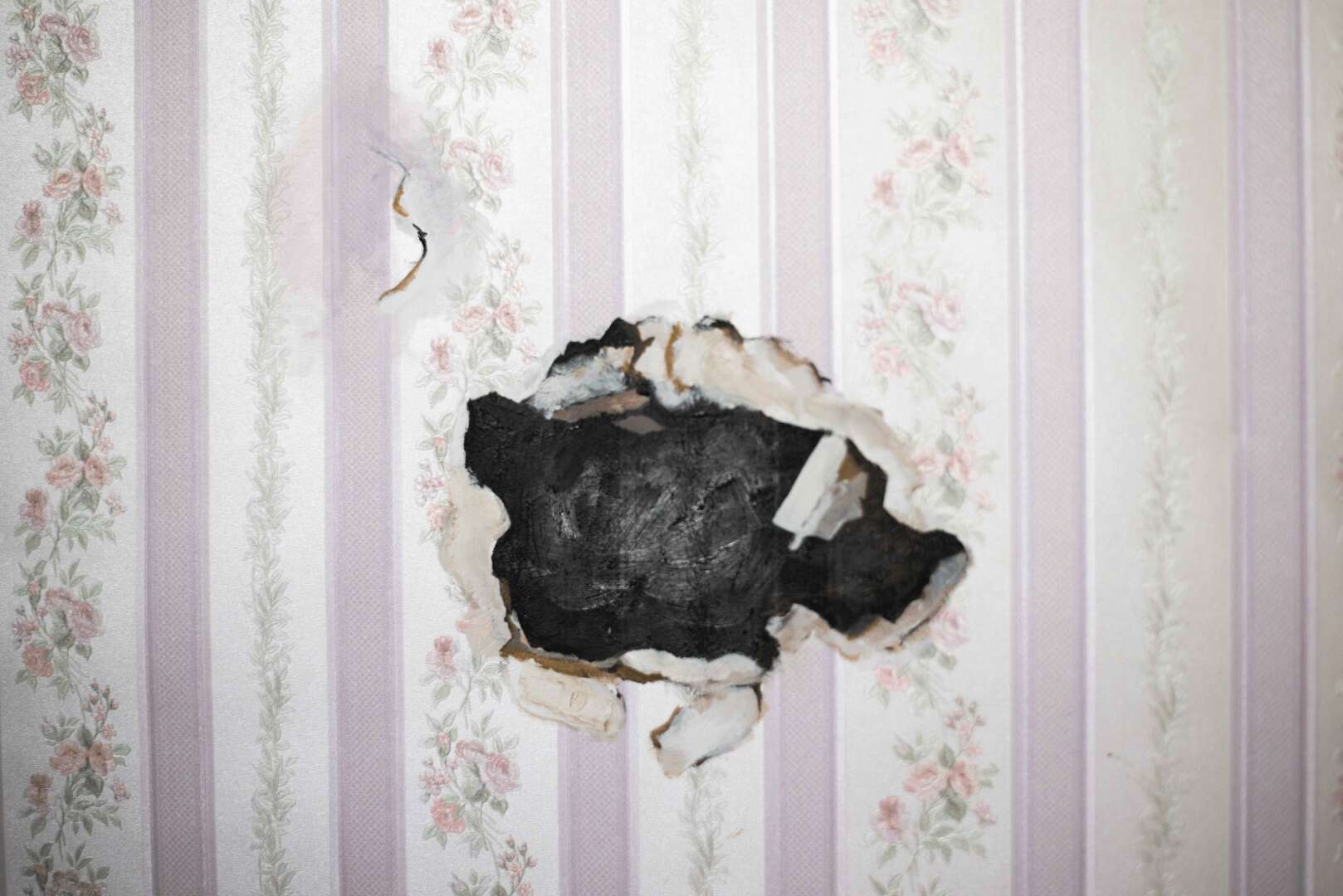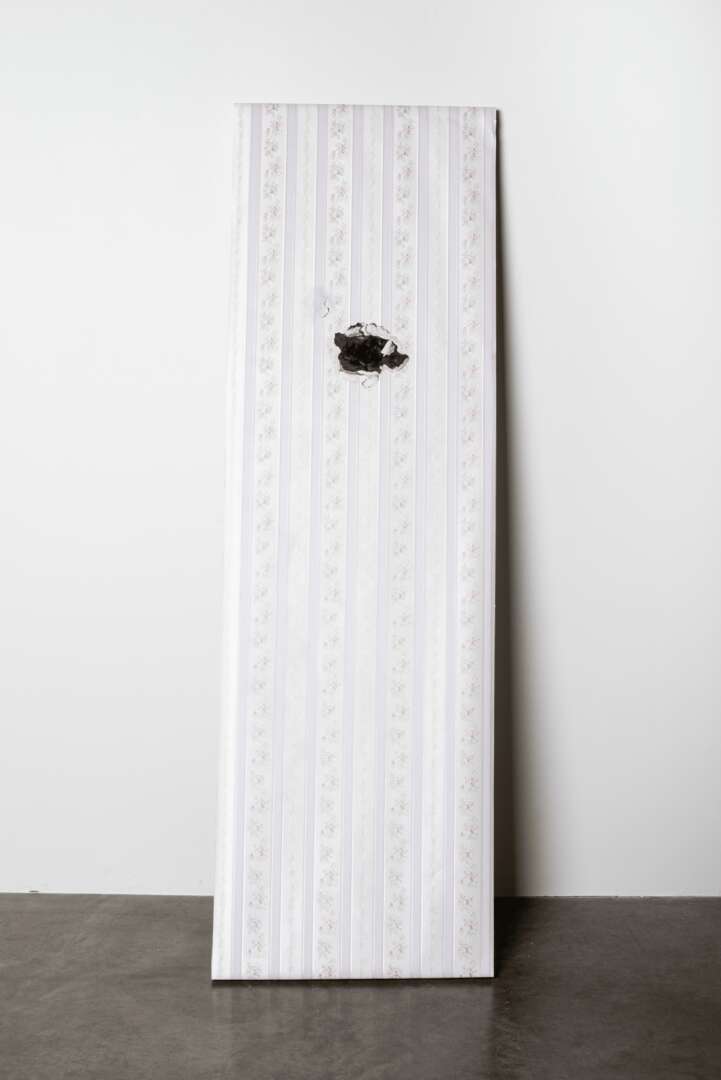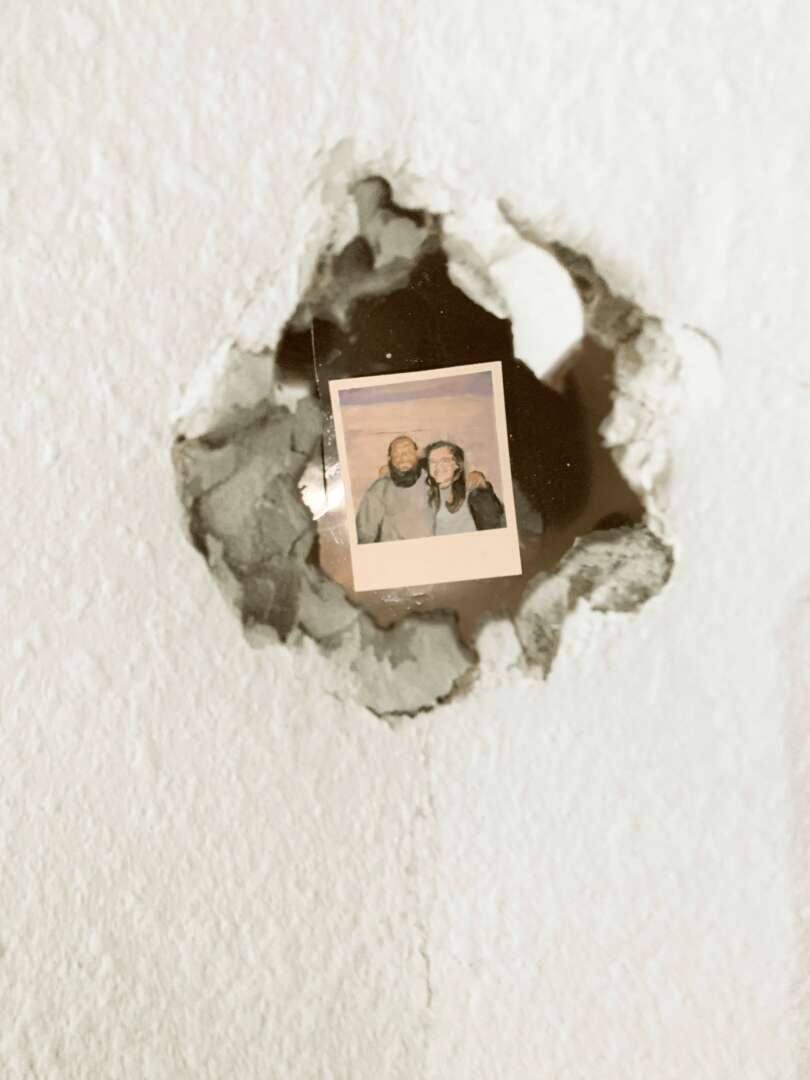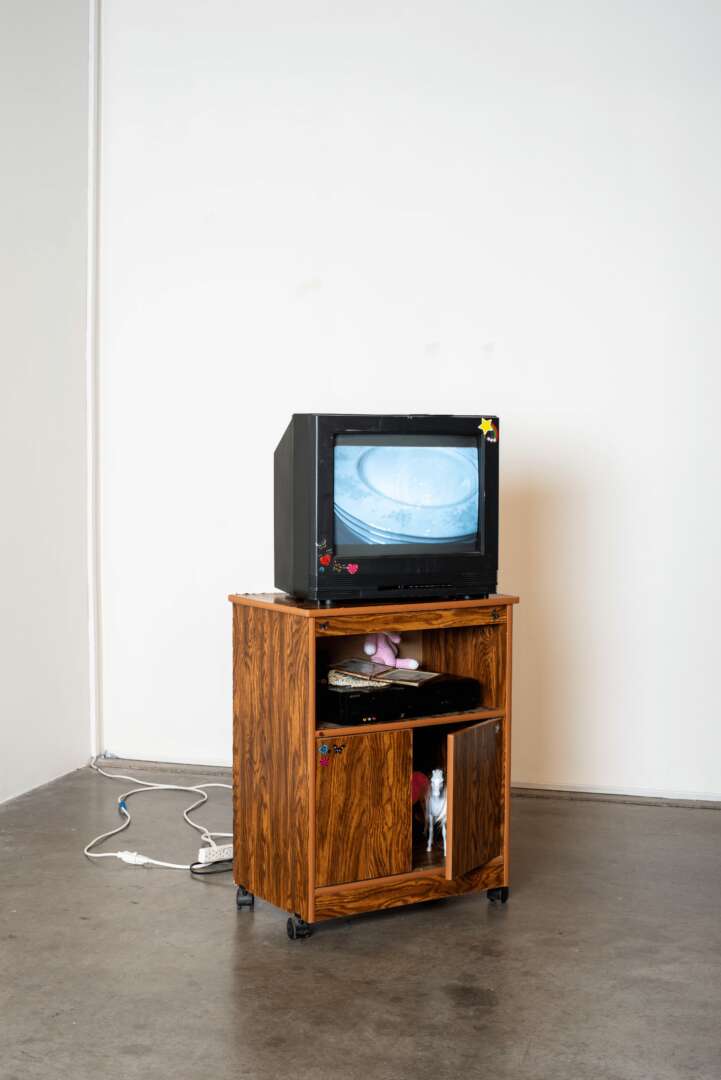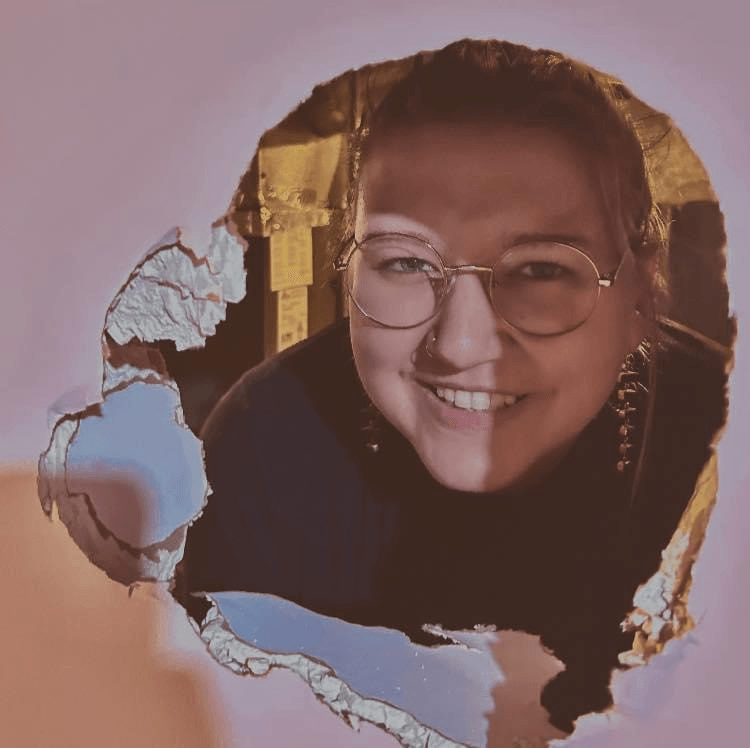We were lucky to catch up with Andrea Shonna Simon recently and have shared our conversation below.
Andrea Shonna, thanks for joining us, excited to have you contributing your stories and insights. What’s been the most meaningful project you’ve worked on?
In graduate school, I started a body of work that changed how I saw myself and the world around me.
For context, I grew up outside of Kansas City, Missouri. In 2018, my partner at the time and I moved to Portland, OR for me to attend the MFA in Craft program at the Oregon College of Art and Craft(OCAC). At the time of this big move, there was a lot of emotional turmoil in my life. My oldest brother Jason had just been put on a heart transplant list. My mom’s cancer had come back and was at stage 4. My partner had come out as trans pushing me to reckon with my sexuality, and to come out on someone else’s terms. My parents split up due to an affair, and my dad embezzling thousands of dollars from his job at the storage facility which caused my parents to lose their house, and consequently me losing most of my childhood belongings. This all happened the summer before the big move, and really set the tone for the next few years. In addition to this, midway through my program, OCAC announced its closure. Pacific Northwest College of Art (PNCA) hosted all OCAC students who were one year from graduating. Then in my last semester of grad school, COVID hit.
My work has always been self reflective.
I started off in graduate school making work about memories, and investigating how I became a conglomeration of these memories. I was asking a lot of questions, like:
Am I me because I grew up in a full house that was falling apart?
Am I me because of the fight my best friend and I had after graduating high school?
Am I me because I had to help my mom re-learn how to walk and talk after having 4 strokes?
The questions could go on forever, and I started to find that integral parts of myself seemed contradictory, and it created a lot of internal friction. My practice became a place to reckon with myself. The inquiry of my practice shifted to questions like:
How can I reckon with growing up in and valuing white-trash culture, and my midwestern christian upbringing with being a queer liberal artist?
How do I make space to love my transphobic brother and my transgender partner?
How can I stand with my values while empathizing and loving my abuser?
I remember a conversation with my mentor where I said that I felt like I was this shattered vase, and that my practice felt like a futile attempt to put the vase back together. Each shard represented a different aspect of self, and it feels impossible to determine how to pieces fit back together.
Shortly after this conversation, I saw Heidi Schwegler’s show at UpFor gallery called planes of scattered pasts, and the work resonated with me deeply. In her show statement, she spoke about a dilemma faced by the Metropolitan Museum of Art when “a five-hundred year old marble sculpture of Adam fell from its unstable pedestal to the floor, shattering into hundreds of fragments. The museum was faced with a choice: either leave it broken or commit to a restoration, as if the event had never occurred. In the former case, suspending the shattered parts with an elaborate scaffolding system would render the accident as its defining moment. Instead, the museum’s conservationists and forensic specialists spent the next ten years painstakingly repairing the artwork, returning it to its near-original state”
After reading this statement I had a light-bulb moment about my own work. The work wasn’t about the shards, it was about the moments of fracture. In thinking about fracture, I was thinking about the metaphorical space between the shards which led to me thinking about negative space as both the traditional usage of the term as well as the negative emotional space which often functions the same way. It’s in the background and the spaces between what you’re paying attention to. I started making work about my negative space, moments of fracture and friction, and things I wouldn’t normally display. This culminated in four pieces for my thesis show. I’ll tell the story of each.
1. Lingering: After losing another job because of workplace harassment, my partner had a hard time seeing good in anything. I tried to offer encouragement that somehow led to yelling that led to a hole punched in the wall. Even if my partner was not a professional painter by trade, it would not have been hard to fix, yet we did not fix the hole. This need to fix the hole along with our decision not to fix it became a kind of negative space. This physical negative space was present for months until we moved out of the apartment. The emotional negative space, lingered still. Visible from my bed, the shape of the hole burned into my memory the same way the shape of light burns your retinas if you look at them too long without blinking. For me, this hole represented the lingering shame. It represented toxic masculinity. It represented the pain, the negative space my partner was feeling. It represented the pain I felt when I stared at the hole, wondering if my future would always look like this.
I pulled out a roll of wallpaper, reminiscent of the wallpaper in my parent’s bedroom when I was growing up, and I painted the hole on the wallpaper. I spent hours painstakingly trying to match just the right shape and size, and slightly exaggerated the physical depth. In these hours I was left to contemplate what a hole in the wall means and my other experiences with them. Most people have some kind of experience with a hole like this one. Without specifying any details this leaves the viewer opportunity to imbue their own experience on the image. Making work about negative space creates a forum to discuss that which is pushed under the rug.
2. My Brother and Romans 3:23 In reflection on my experiences with masculine anger I thought about other memories in which this has made an impact on me. Particularly a whole being punched in a wall. I bought a small piece of drywall from lowes, and I punched a hole in it to see if I could. It made me think of my brother punching holes in the wall, and I wrote an essay about my brother Brad, who I have a complicated relationship with. When I came out to him, he made a lot homophobic and transphobic comments, but has in many other situations been a great support to me. I made a small painting of my brother and I hugging from a polaroid that had been taken a few months prior. I was thinking about how little of our relationship was shown in this image. I ended up using the piece of drywall I punched a hole in as a frame for this image because it was a lens that gave a more dimensional look into our relationship. I modified the piece by adding a few other objects and materials that referenced other memories of my brother and I.
3. Target Practice: Continuing the same line of thought, I was thinking about the hole punched in the wall being an act of violence without a physical victim, but still leaving this feeling of tension in the air. It made me think about how growing up, we’d put cans on a clothesline post to practice shooting and the friction of this being a part of my upbringing, while being surrounded by friends who are largely against owning firearms. I was reflecting on how people like me and many people I care about feeling constantly in the crosshairs. I painted a can pink, and placed it atop a clothesline post that I built as a representation of this feeling of constant tension of potential violence by and against loved ones.
4. A Grown Man’s Tantrum: Another memory that came to mind when thinking about previous experiences of masculine anger was when my dad got angry about something minor and inconsequential. He jumped up and down shaking the whole house, and I distinctly remember the sound of the china cabinet rattling while I was in the my room watching TV. At a thrift store I found an old TV cabinet and TV. I recorded a video of plates rattling and played it on the TV, I covered the frame of the TV and the cabinet with stickers and filled the cabinet with toys in a way that looks a little unsettling highlighting the feeling of the frozen feeling when you bear witness to this type of anger
Making this work allowed me to really make connections between the parts of myself that felt disparate. Showing the work was a wholly different experience than making it. People would come up to me after looking at my work and tell me their own related stories, and it created a lot of really beautiful moments of affirmation and mutual empathy. It created connection. The audience filled the negative space with their own stories, and in a way it served as glue to hold shards together, like a metaphorical kintsugi.
This work made me reflect a lot on people’s multidimensionality, and my own for that matter. It made me value finding connection with people, and it made me start to see negative experiences with an air of appreciation and understanding.
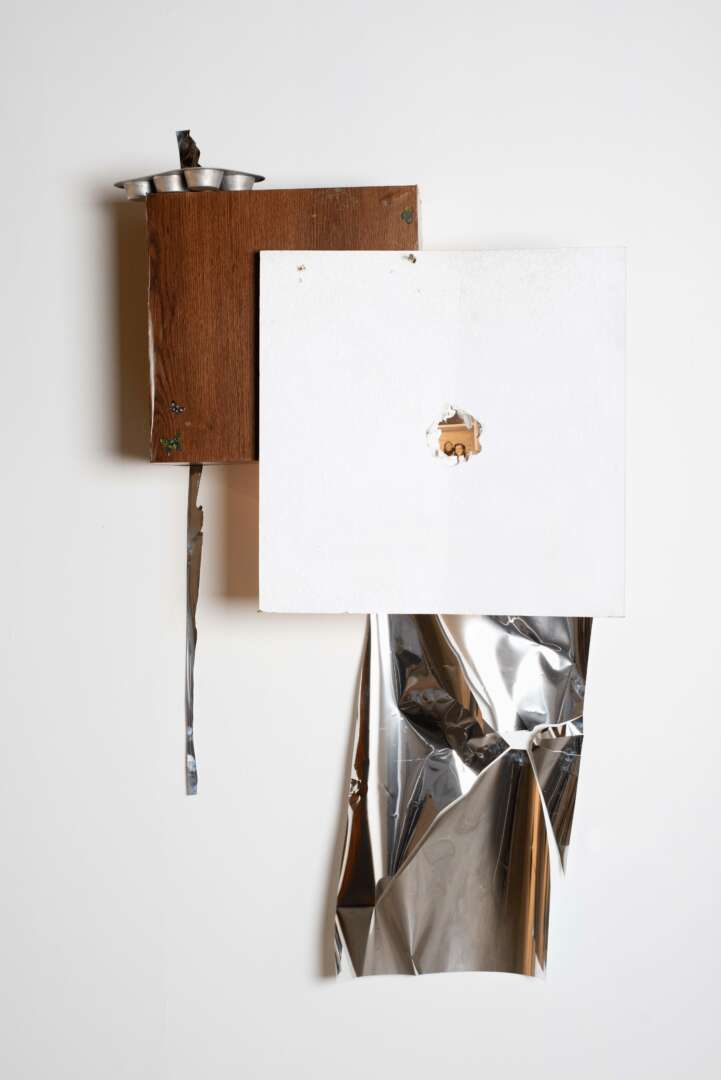
Andrea Shonna, love having you share your insights with us. Before we ask you more questions, maybe you can take a moment to introduce yourself to our readers who might have missed our earlier conversations?
I am a queer artist and art instructor. I grew up outside of Kansas City. I come from a large blended family and a low-income background, and was raised with midwestern christian sensibilities. I have been an artist and maker for as long as I can remember. I have memories of being 5 years old and asking my dad to draw me something then I would take the drawing to my room and re-draw the same drawing. I also remember spending summers at my grandparent’s farm. My chore was to pull weeds in the garden, and I would weave little dolls, and clothes for them out of the weeds I pulled. Aside from when I was 3 years old and wanted to be a wal*mart greeter, I have always wanted to be an artist.
I am not married to any particular media. Art is an opportunity to communicate in a way that can’t be accurately translated in any other language, and every media offers an expansion of visual vocabulary. My work is largely self-reflective. There’s a quote from Jenny Slate’s book Little Weirds that really resonates with how I think about my practice when I’m making. “As the image of my self becomes sharper in my brain, and more precious, I feel less afraid that someone else can erase me by denying me love.” Through my practice, my self image comes into sharp focus in a way that I’m able to translate in any other language. I feel especially proud of my work when someone comes up to me at a show and tells me that they feel seen by my work. It creates this feeling of community and connectedness.
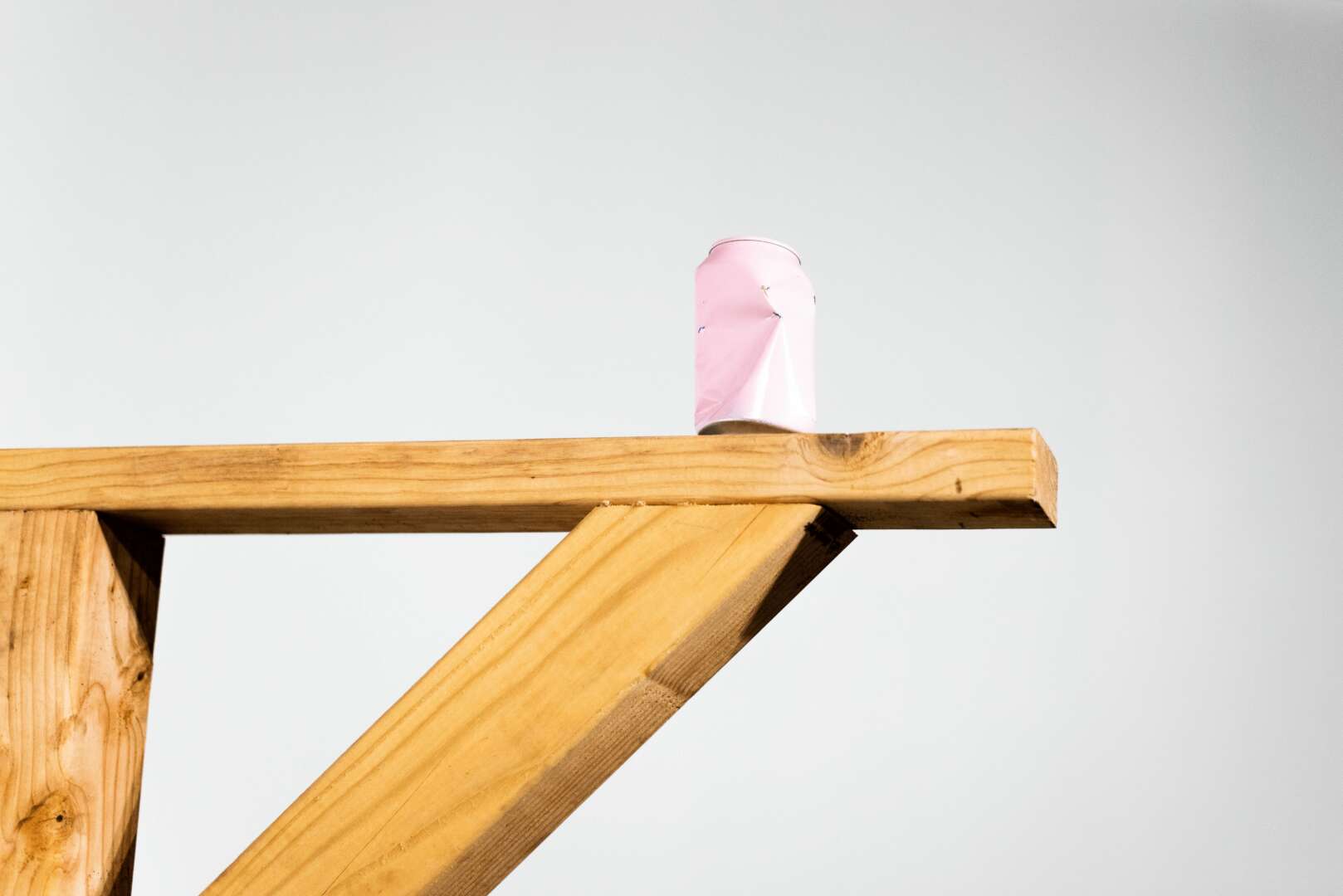
We’d love to hear a story of resilience from your journey.
I touched on this in my story about a meaningful project: I grew up outside of Kansas City, Missouri. In 2018, my partner at the time and I moved to Portland, OR for me to attend the MFA in Craft program at the Oregon College of Art and Craft(OCAC). At the time of this big move, there was a lot of emotional turmoil in my life. My oldest brother Jason had just been put on a heart transplant list. My mom’s cancer had come back and was at stage 4. My partner had come out as trans pushing me to reckon with my sexuality, and to come out on someone else’s terms. My parents split up due to an affair, and my dad embezzling thousands of dollars from his job at the storage facility which caused my parents to lose their house, and consequently me losing most of my childhood belongings. This all happened the summer before the big move, and I considered postponing going to grad school. I remember talking to my mom about this, and she told me that I can’t put my dreams on hold because of things that may or may not happen. I took this advice to heart, and moved. While in grad school, I was working full-time to support my partner at the time who was having a hard time continuing in their career in the construction industry as a trans woman.
Midway through my program, OCAC announced its closure. Pacific Northwest College of Art (PNCA) hosted all OCAC students who were one year from graduating in a teach-out program. This transition was far from seamless. Though I’m sure it was not the intention of the institution, the OCAC teach-out students were not given the same resources their students had, and we lost a lot of resources and faculty support from OCAC. Then in my last semester of grad school, COVID hit, and I had to navigate losing a studio as I was preparing for my thesis show. Through all of this, I created a body of work I am proud of and I earned my MFA.
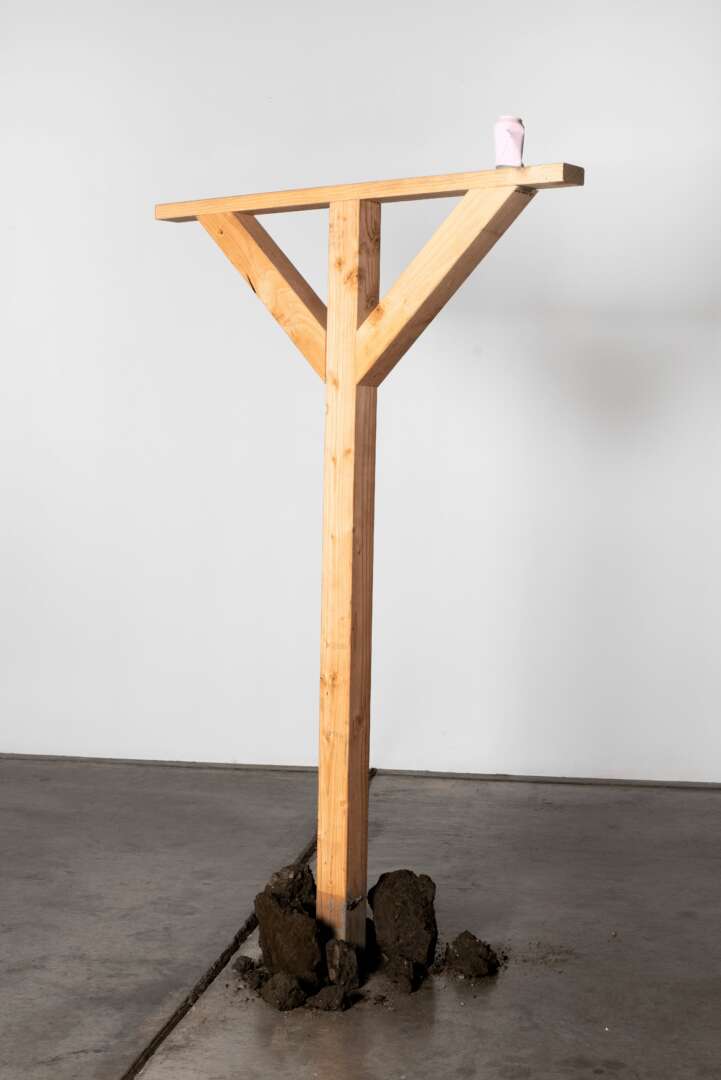
What do you think is the goal or mission that drives your creative journey?
I address a lot of topics that are hard for people to talk about. Through vulnerability in my work, I want people to see themselves in it, and feel less alone in their own journey.
Contact Info:
- Website: https://andreashonnasimon.com
- Instagram: andreashonna
